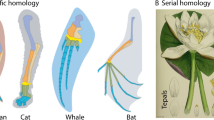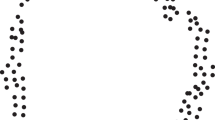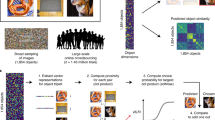Abstract
THERE have recently been many objections to the orthodox definitions of biological homology in terms of common ancestry on the grounds that such definitions are circular1–4. Parts of two organisms are defined as homologous if they are represented by a single part in a common ancestor. But homology itself is invoked in making this identification of parts of organisms with a part in a common ancestor. Various authors have advocated a return to Owen's5 criterion of homology—“the correspondency of a part or organ, determined by its relative position and connexions, with a part or organ in a different animal”. Jardine6 has formulated a logical model for correspondence of parts of things with respect to a set of relations along lines suggested by Woodger3, and from it has derived a general method for finding such correspondences.
This is a preview of subscription content, access via your institution
Access options
Subscribe to this journal
Receive 51 print issues and online access
$199.00 per year
only $3.90 per issue
Buy this article
- Purchase on Springer Link
- Instant access to full article PDF
Prices may be subject to local taxes which are calculated during checkout
Similar content being viewed by others
References
Boyden, A., Quart. Rev. Biol., 18, 228 (1943).
Boyden, A., Amer. Midl. Nat., 37, 648 (1947).
Woodger, J. H., in Essays on Growth and Form (edit. by Le Gros Clark. W. E., and Medawar, P. B.) 95 (Clarendon Press, Oxford, 1945).
Zangerl, R., Evolution, 2, 351 (1948).
Owen, R., Rep. Brit. Assoc. Adv. Sci., 16, 169 (1847).
Jardine, N., Brit. J. Phil. Sci., 18, 125 (1967).
Allis, E. P., J. Morph., 12, 487 (1897).
Allis, E. P., J. Morph., 14, 425 (1898).
Allis, E. P., Anat. Anz., 18, 25 (1899).
Goodrich, E. S., in A Treatise on Zoology (edit. by Lankester, E. R.), part 9, fasc. 1 (Black, London, 1909).
Gregory, W. K., Trans. Amer. Phil. Soc., N.S. 23, 75 (1933).
Sneath, P. H. A., and Sokal, R. R., Principles of Numerical Taxonomu (Freeman, London and San Francisco, 1963).
Ridewood, W. G., Proc. Zool. Soc. Lond., 1904 2, 448 (1904).
Author information
Authors and Affiliations
Rights and permissions
About this article
Cite this article
JARDINE, N., JARDINE, C. Numerical Homology. Nature 216, 301–302 (1967). https://doi.org/10.1038/216301a0
Received:
Issue Date:
DOI: https://doi.org/10.1038/216301a0
This article is cited by
-
A New Approach to Pattern Recognition
Nature (1971)
Comments
By submitting a comment you agree to abide by our Terms and Community Guidelines. If you find something abusive or that does not comply with our terms or guidelines please flag it as inappropriate.



